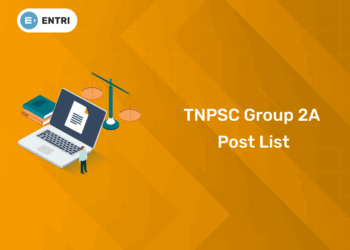Table of Contents
Learning how to code can be challenging, and when you’re learning how to code a banking application, the challenge can seem even more insurmountable. Thankfully, there are plenty of programming languages out there that are ideal for this type of project, and which will help ensure that your project progresses smoothly, without any hiccups along the way. This guide details eight of the most popular languages used to build bank applications and will hopefully help you make an informed decision about which one to pick for your own application.
Languages To Code a Banking Application
Here are the list of languages to code a Banking application:
Python
1: Which of the following is a JavaScript framework/library?
Python is an object-oriented, high-level programming language with dynamic semantics. Its high-level built-in data structures, combined with dynamic typing and dynamic binding, make it very attractive for Rapid Application Development, as well as for use as a scripting or glue language to connect existing components together. It’s also used frequently in Machine Learning and Data Mining applications where frameworks like Scikit-Learn and scikit-image are used extensively. The panda’s library can be used for data manipulation and analysis; python also has many third-party libraries to choose from (like NumPy, Matplotlib) which makes it extremely powerful for Machine Learning.
🚀 Start Coding Today! Enroll Now with Easy EMI Options. 💳✨
Get Hired as a Full-Stack Developer: Master the Skills Employers Are Looking For!
Start Learning With EMI Payment OptionsJava
Java is a popular, general-purpose programming language. (A language that can be used to create any type of software). It is one of the most popular languages and has been around for more than 20 years. Java is an object-oriented programming language, but it also supports procedural programming. A big benefit of Java is that it’s platform-independent, which means you can write your application once and run it on any operating system. This makes Java very attractive for developers because they don’t have to spend extra time writing applications for different platforms. Many large corporations use Java as part of their standard development environment because it makes life easier by cutting down on development time and increasing programmer productivity.
C++
C++ is one of today’s most common languages for commercial development. From being used as a scripting language for CGI to powering games, business applications, and much more, C++ has an extensive range of uses. It’s extremely powerful and offers fast execution times, but it also has steep learning curves and may be difficult to read due to its complex code structure. The upside is that there are tons of tools available to assist with the development and debugging (e.g., debuggers). It’s also backward compatible with C, which makes switching between languages easy. Although it takes time to master, C++ is a great option for those who want to build highly scalable systems that run efficiently on multiple platforms.
.NET Framework
.NET is probably your best bet if you’re building an application from scratch. On top of being Windows-based, C# and Visual Basic are very useful in day-to-day work. The .NET Framework itself might be used for lesser applications but it’s not good for building critical systems that require intense security. It’s more appropriate for server-side development, as well as desktop solutions. The Microsoft .NET Framework is an open-source system based on C# and Visual Basic. NET Framework uses common language infrastructure (CLI) to run various languages. There are also functionalities that can easily be implemented by C++, such as garbage collection. .NET Framework is mostly used to build Windows desktop applications with support for web services, web application development, and cloud computing.
🚀 Start Coding Today! Enroll Now with Easy EMI Options. 💳✨
Get Hired as a Full-Stack Developer: Master the Skills Employers Are Looking For!
Start Learning With EMI Payment OptionsGo
If you’re just looking to write simple applications, Go is an ideal language. It’s simple, robust, and easy to build on top of. It also runs on Google’s Cloud Platform, so you can deploy your app easily. However, if you have complex workloads or want performance beyond what Go can provide (e.g., through concurrency), consider Python instead. The Go programming language is relatively new, but it has quickly become one of the most popular options for modern-day programming. Created by Google, Go (often referred to as Golang) combines elements of other languages and makes them simple to implement. It’s one of those rare perfect fits in software development: You can create web servers, apps, and all kinds of different code in just about any industry. Whether you’re working on an Android app or a desktop application that helps your users monitor servers, Go is worth considering if you want to learn to code for free. Oh, and did we mention it’s also open source? If you’re looking for alternatives to learning Java or Objective-C, check out Go!
Swift
This is Apple’s first official programming language, so it’s definitely worth looking into. Swift is fairly new to the market and hasn’t hit 1.0 yet (the current version at the time of writing is 0.9), but it has been gaining traction with developers lately because of its ease of use. This particular skill would be used for mobile apps written in Objective-C for iOS devices, but with Swift around you may have an easier time finding jobs as well as being able to develop iOS apps more quickly than ever before. The new language also makes sense from a hiring perspective as most people know Objective-C and can learn Swift easily; thus, your chances of landing a job will improve when you have knowledge in both languages.
JavaScript (Node.js, Vue.js, React.js, Angular.js, jQuery)
JavaScript is a widely used, general-purpose programming language. Many open source technologies use JavaScript and it’s useful in almost every kind of application you might want to build. Some other languages are built on tops of it, such as CoffeeScript and TypeScript. JavaScript is also used by two popular frameworks: Angular and Node.js (used to create server-side applications). JavaScript is one of today’s most popular programming languages, in part because it underlies so many web applications. It’s also more complex than some other options—JavaScript supports object-oriented, functional, and imperative styles—so it’s easier to make mistakes and harder to debug when you do. For many developers, JavaScript remains an optional language. But as an increasingly core technology for building web and mobile apps alike, it pays to be familiar with JavaScript basics.
Lua
Lua is an open-source, embeddable scripting language used to build applications and video games. Lua was created by Roberto Ierusalimschy, Luiz Henrique de Figueiredo, and Waldemar Celes in 1993 at Pontifical Catholic University of Rio de Janeiro (PUC-Rio), where all three still teach today. Though not as well known as other languages on our list, Lua has been growing in popularity over time. In fact, according to its website, major organizations like NASA use it for ground control software for satellites and space missions including Mars Rover and Cassini. So if you need to create anything that can run itself automatically with no input from human hands—banking software?—Lua could be your answer.











